
This article was featured in One Great Story, New York’s reading recommendation newsletter. Sign up here to get it nightly.
The morning light shines through your flax-colored curtains made from 100 percent European linen. You jump out of your dusty-mauve sheets (also linen) and slip into a soft ivory robe (bamboo jersey). After showering and drying off with your ivory bath towels (Turkish cotton), you pull out a pan (nontoxic ceramic) to fry some eggs and slice your toast with a serrated knife (Damascus steel). You mix water (in a beaded tumbler) with a pouch of electrolytes (zero sugar) and brew some coffee in your French press (stainless steel). Then it’s time to get dressed: You and your daughter opt for matching ivory fisherman sweaters (100 percent Mongolian cashmere) — she pairs hers with a miniskirt (100 percent washable silk), while you go for a trouser (wrinkle-free ponte), loafer mules (Italian calfskin), and a pair of earrings (freshwater pearls). Thank God you stocked up on gold bars (24 karat) before the tariffs kick in.
All of this stuff, everything you need to outfit a picture-perfect life, can be purchased from Quince, a slick yet approachable online store where the prices are always discounted but nothing ever goes on sale. Short for quintessentials, Quince is a one-stop dupe shop for a new generation of discerning, albeit weary, consumers, mostly millennials who have been burned too many times by sketchy Amazon sellers and fast-fashion impulse buys. They aspire to a tastefully understated beige lifestyle of safe, classic status symbols — sans the logos and markups that typically accompany them. Come for the $50 cashmere crewneck sweaters you heard about in a podcast ad; stay for the 365-day return policy and unending stream of surprising new product launches. Luggage! Vitamins! Royal Osetra caviar and artificial Fraser-fir Christmas trees, just in time for the holiday season!
Since launching in 2019, Quince has quietly become one of the fastest-growing retailers in the U.S., backed by more than $200 million in venture-capital funding. Its annual sales nearly tripled in 2023 and then more than doubled in 2024, according to indexed data from Bloomberg Second Measure. “They have an answer for every new thing that’s coming out,” said Hillary, a 38-year-old lawyer who got her first taste of Quince in 2021 and now shops there at least once a month. She rattled off a list of stuff she recently bought as Christmas gifts: a jewelry case for her mom, cashmere baby clothes for her nephew, a gym bag for her fiancé, and leather boots for herself. “It’s not really a brand,” Hillary told me. In many ways, she’s right. Quince is more like a curated marketplace for white-label products, cleverly disguised as a swanky direct-to-consumer start-up. There’s no girlboss founder or hyped-up creative director at the fore, no sales associates or stores, no celebrity face or limited-edition collaborations.
Industry experts estimate Quince’s annual revenue is now somewhere above $500 million, well on the way to reaching the billion-dollar milestone. That would make Quince bigger than Everlane and faster growing than Gap and Aritzia, all without employing a single fashion designer. It’s the “quintessential” brand for our post-brand moment, when even Nike is struggling and one in four Americans shop at the Chinese fast-fashion giant Shein. Retail has turned into a battle of the dupes, and the weapons are free shipping, influencer affiliate links, and those ubiquitous podcast ads. “They are really proactive about getting new SKUs in front of me, offering to send samples,” said Alyssa Loring, a Boston mom of three who runs a lifestyle blog called Feathers and Stripes and recommends Quince’s luggage and cashmere tops to her readers. (Quince’s lesser-known competitor Italic has never sent her anything.)
Dupes are nothing new in retail — especially in fashion. In the U.S., the cut and shape of a garment are usually considered functional details and cannot be protected by copyright. For decades, retailers have tracked trends by shopping the market and tweaking competitors’ wares, hoping their versions will outsell those of their peers. But few have embraced the practice as ruthlessly or proudly as Quince has. Every product must have its “comps,” said a former employee, referring to a section on each item’s description page that lists how much a very similar offering could cost elsewhere, usually from premium mid-market brands like Madewell or Coach or West Elm. Quince’s sweet spot is under $200, but its prices vary and can reach up to the thousands for sectional couches and lab-grown-diamond studs.
Not being too cheap is part of the strategy. Quince shoppers probably saw the ultracool Scandi label Toteme’s charming embroidered-trim scarf jacket on their favorite influencer, balked at its $1,130 price, and searched online for alternatives. Quince’s $200 version is still 100 percent wool, unlike Shein’s take on the exact same jacket, which comes in at less than a quarter of Quince’s price but is 100 percent polyester. Plus, shopping from Shein can feel as cheap as its chaotic website looks. Rather than Shein, Quince targets many of the DTC darlings that launched in the past decade to undercut designer labels and department stores, brands like Mejuri (for simple gold-plated jewelry) and Bombas (for charitable socks). Now Quince is undercutting them. “Basically anything that you are experiencing in your life, they want to offer at a lower price,” said another former employee. “It’s like if Amazon and Pottery Barn and J.Crew had a baby.”
Quince-ify It
Look familiar? Where you’ve seen some of the brand’s styles before.

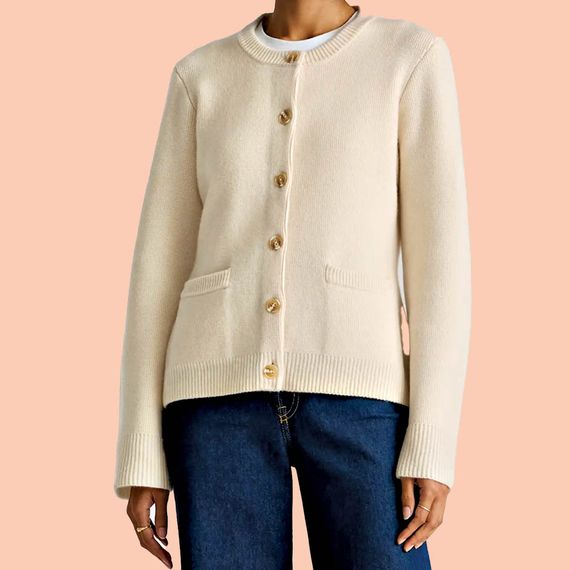
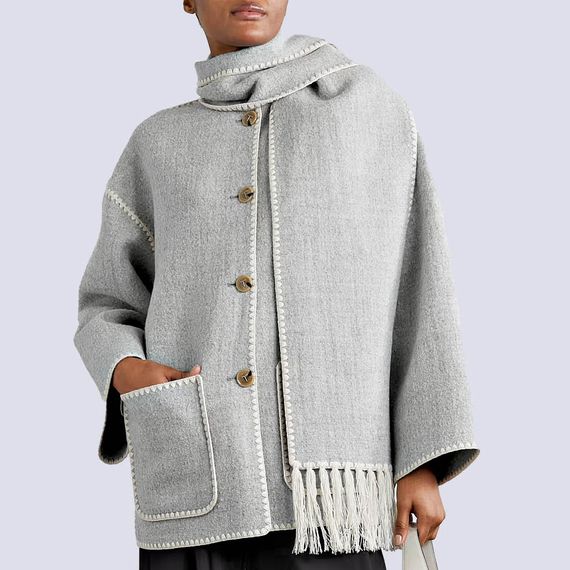
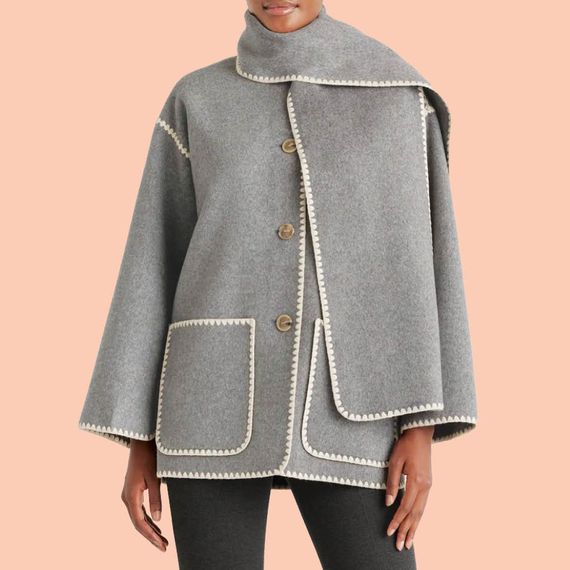
In its marketing, Quince is a champion of transparency. “Honesty is always our policy,” reads the website’s “About Us” page. CEO and co-founder Sid Gupta, however, rarely speaks to the press. After I made multiple requests to interview him, his representatives sent me a series of general remarks that would be better suited for that “About” page. They declined to make anyone else available for an interview, then did not respond to a list of fact-checking questions.
Quince’s reputation in San Francisco, its U.S. base, is opaque. Gupta, 44, and his wife, Zunu Mittal — a former software engineer and the brand’s president — run a lean team that, as of last year, had 326 employees, half of whom live outside the U.S. One investor said she heard the company has a growth-at-all-costs mind-set. The former employees I spoke with agreed, saying Quince is a stressful place to work with a high level of employee churn. They said goals are always changing, putting pressure both on employees to work longer hours and on Quince’s factory partners to cut costs, all in the service of growth. “Sid thought the sky was the limit on applying this model,” said a former employee. The cashmere sweaters were just the beginning. “This could be for anything — it could be tires, it could be camping.”
Or meme-y baseball caps, as was the case in 2021 when Quince released a $50 version of Kendall Roy’s $625 plain blue Loro Piana cashmere baseball cap only weeks after it first appeared on HBO’s Succession. The cashmere hat exemplifies how the Quince-ifying process typically works, according to former employees. Each week, Gupta’s merchants propose new items to sell, based primarily on how much money a similar style brings in for another retailer. Their secret weapon is data-scraping software that tracks sales on competitors’ websites and can report, say, that Anthropologie sells a million dollars’ worth of a cotton summer dress each year. If Gupta is convinced of the sales potential of a certain item, Quince’s merchants buy several versions from the competitor. A few are sent to manufacturers overseas to replicate, and at least one is kept on hand by the merchants to check against samples before the new product launches on the site.
In many ways, Gupta is the archetypal Silicon Valley founder. Born and raised in the Bay Area, he credits his entrepreneurial bent to the local Indian community, where it was common for family friends to start tech businesses. In 2007, Gupta was five years out of college and fresh off a stint in private equity. Looking to finally get some operational experience but lacking a great tech start-up idea, he took his savings and bought a small distressed chain of 11 midwestern mall candy stores called Candyopolis. “I just always wanted to run a company,” he said in a 2021 episode of the business podcast Stairway to CEO. Gupta’s parents were “horrified,” he said, but his father joined him in the business. Within a few years, Candyopolis was doing well enough that Gupta applied to Stanford B-school, where he developed the idea for a higher-end sister business backed by venture-capital funding. (Stanford is also how Gupta met Mittal through a mutual friend, her cousin. Ever the workaholic, Gupta proposed to her a few years after graduating while on a business trip near where she lived in Hyderabad, India.)
Lolli & Pops, the shiny new candy-store concept, opened its first store in Tulsa in 2012. The shops were theatrical, modeled after English apothecaries, complete with retro signs and “down-the-rabbit-hole Alice in Wonderland–type rooms,” as Gupta described them. Staff members handed out samples while wearing costume uniforms that featured red bow ties, white oxford shirts, black-striped aprons, and straw boater hats. The gimmicks worked. Lolli & Pops expanded rapidly, acquiring other candy stores and opening in more malls. But the rapid expansion took a toll. In August 2019, the company filed for bankruptcy protection, blaming declining mall traffic. By then, Gupta had stepped down as CEO and introduced his next venture, one designed to avoid the headaches of malls and stores entirely.
Quince launched under perhaps a more fitting name, Last Brand, in January 2019. Gupta raised the initial funding with a shrewd pitch. For the past decade, DTC brands like Everlane had educated shoppers about avoiding wholesale markups, “cutting out the middleman,” and finding factories that produce for luxury brands. Now, Gupta saw a way to sweeten the deal: He would exploit a little-known law called the de minimis tax exemption that bucks the typical shipping process for an American retail brand. When you order a dress from Gap, for example, that dress is usually already in the U.S., sitting in a warehouse, waiting to be bought. Gap probably ordered it in bulk, months earlier, from the brand’s factories in Southeast Asia, which likely sent the dress to the U.S. in a shipping container by ocean freight. At Customs, Gap paid a series of fees and duties. Instead, Gupta would follow the Shein approach: shipping individual parcels directly to U.S. shoppers from wherever the item is made, usually China. Under the de minimis tax exemption, packages valued at less than $800 are not subject to any import duties and taxes, making it an effective cost-saving strategy for retailers selling cheaper goods.
At first, Last Brand’s shipments could take weeks to get to customers. But if those early customers were left dissatisfied, the site soon had a new name and look. In June 2020, Last Brand officially became Quince, like the fruit, pronounced “kwins.” “It was crisp, it was clean, and it represented a modernity of what we were trying to do,” Gupta said.
The pandemic was a boon for e-commerce and for Quince, which honed its sourcing machine. The duping strategy comes with some legal risk, but that’s what lawyers are for. Both Yeti and UGG have sued the company for copyright or trade-dress infringement. (Yeti’s complaint claimed that Quince had copied parts of its tumbler’s product description word for word. The Yeti lawsuit was settled in 2023, while Quince’s battle with UGG continues.) But not all of Quince’s targets have Yeti’s and UGG’s legal resources. A former executive at a smaller retailer said her brand tried to push Quince to stop using its name in marketing and product pages. Gupta “was basically inviting us to sue because he knew he would win,” said the executive, whose company ultimately did not pursue a legal case after the team realized it would be expensive and difficult to defend. “He’s not afraid to do what other people would think is pretty dirty.”
As Quince expands, its sourcing team constantly searches for manufacturers that can deliver sufficient quality and agree to the company’s unusual payment terms. Most traditional retailers pay some amount up front, before factories manufacture a big batch of dresses or handbags. Then the retailer owns the inventory until the customer buys it. But not Quince. As another way to cut costs, Quince often pays manufacturers for its products one at a time, only when the product has been bought by a customer and shipped out by the factory. A Quince employee said the company frequently tries to renegotiate the cost of each item after the factory has already made the products but before they’ve been sent out to shoppers. “I was told multiple times to push vendors so much to get them to a point where they say, ‘If I give you a cost that’s any lower than this, I will not be able to sell it to you,’” said another former employee. Why would factories put up with this? Many pass, that ex-employee said, while others are lured by the promise of Quince’s fast growth; most of those traditional retailers, the ones that pay up front, are either shrinking or struggling to grow after years of declines.
The price markup on Quince’s products can vary but is usually purposely thin, another former employee said, describing Gupta’s mentality as “chase sales with low prices” and “figure out how to make money later.” It’s a classic tech-start-up mentality that may not become a problem until Gupta is ready to seek an exit, most likely by taking the company public or landing an acquisition by a larger player like Amazon. And Quince may have some existential problems to confront first. President Trump is cracking down on the brand’s favorite tax loophole as part of his ongoing trade wars. In early February, Trump abruptly blocked the de minimis exception on small shipments from China for the better part of a week, delaying product deliveries and upending Customs procedures. The repeal was paused after a few days to give U.S. officials time to adjust inspection policies but could still jeopardize Shein’s, Temu’s, and Quince’s business models. Will Americans buy the retailers’ deals if they aren’t so cheap and fast, or will they turn back to Amazon instead? Even Quince’s signature $50 cashmere sweater is now $60.
The day Trump’s initial executive order went into effect, I ordered a pair of Quince men’s chinos from Hong Kong. Unlike my previous orders that sailed through their first stop in the U.S., this package spent the better part of a day in Memphis, awaiting Customs clearance. Perhaps in anticipation, Quince has started holding more of its inventory in the U.S. the old-fashioned way. When I ordered some of Quince’s popular Chinese-made Mongolian sweaters in January, they shipped not from Hong Kong but Pennsylvania.
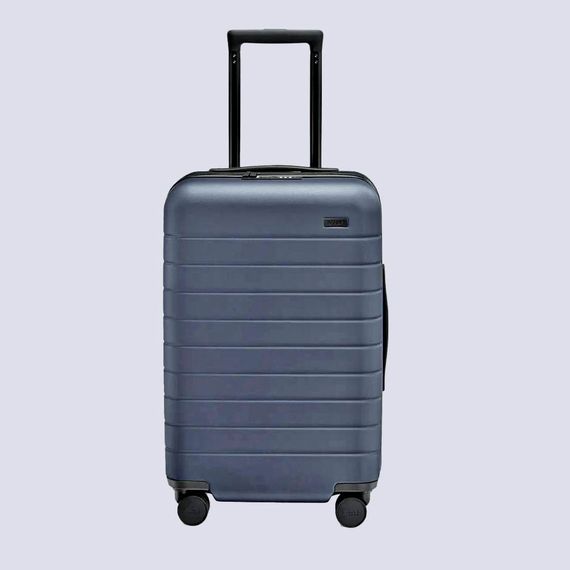
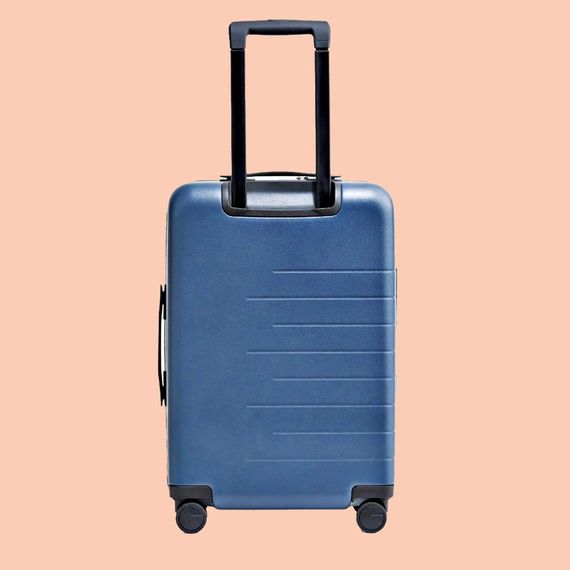
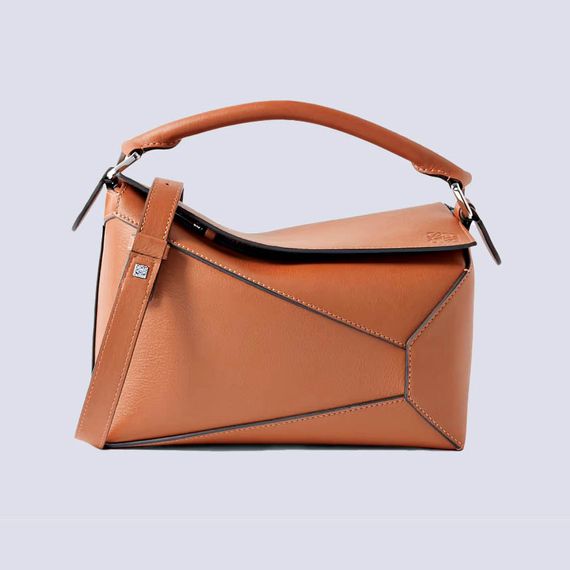
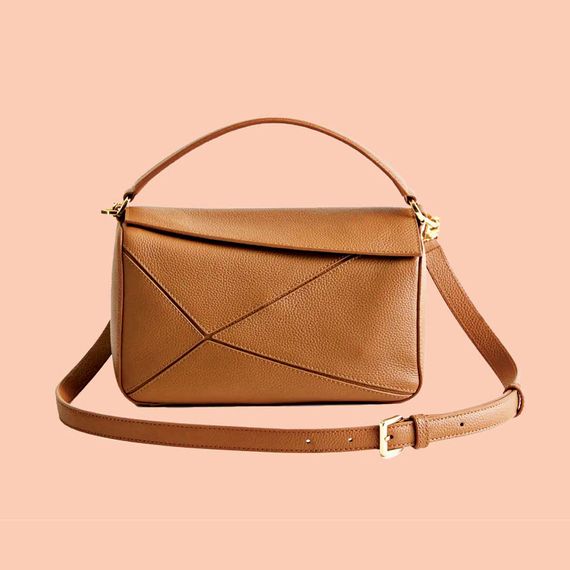
Laura first discovered Quince in 2021, when she was looking for a cheaper version of a Jenni Kayne sweater. Before the pandemic, the 39-year-old lawyer had been a loyal Rent the Runway subscriber. But when she started working a hybrid schedule, she couldn’t justify the cost. “I was looking for stuff that I could mix and match, that I could wear often without looking like I’m repeating outfits at work.” She was tired of falling for short-lived trends and realized she was missing many of the “wardrobe staples” that YouTubers kept talking about. The designer options were too expensive, so Laura began turning to Quince for basics. She found Quince’s Jenni Kayne–esque sweaters “pretty good”; its Mejuri knockoffs, too. “They even have the Chanel leather quilted bag,” she said. Without the Chanel logo, of course.
I know exactly the kind of influencer content that turned Laura on to beige sweaters and comfy trousers because I’ve been influenced too. Every time I linger on a TikTok video of a young, thin white woman in an oversize wool coat, my feed is promptly filled with nearly identical clips of clones in straight jeans, oatmeal colored crewneck sweaters, chunky gold hoops, barely there makeup, and leather loafers. Their homes are sparse and neutral, outfitted with jute rugs, cloudlike couches, and wood-stump stools. I long to channel the same kind of cozy, nonchalant elegance as I search online for mushroom lamps and sensible button-downs and find myself bombarded by endless indistinguishable options at wildly varying prices. Yet Quince always seems to dominate the top of my Google results.
Vibe-shift chronicler Sean Monahan dubs this ubiquitous style “bourgeois normcore.” Its most passionate fans are millennials like me, who are now the largest consumer group in the U.S. The pandemic pause lasted long enough for many millennial women to get married, get divorced, and have babies. They emerged from lockdown with swollen closets but few ideas of how to dress for a work-from-home world, now that their go-to skinny jeans and side parts had been declared “cheugy” by a new app and a new generation. The idea of wearing leggings and sneakers all the time had finally lost its novelty.
“There’s a real reaction against casualness amongst younger people,” Monahan said, recalling a trend study from a few years ago that showed 20-somethings in the U.K. were starting to see sneakers as the uniform “for old people.” It was a sign that the streetwear trends that dominated the 2010s with hyped, limited-edition drops of graphic T-shirts and hoodies were starting to lose momentum. “Balenciaga pushed it to its most absurdist ends,” he said. Inflation was everywhere, but the price hikes in high-end fashion felt especially egregious. “For years, the luxury fashion industry stoked the desire of the middle classes to possess it, at the same time treating them with disdain by pricing them out,” said fashion critic Eugene Rabkin. “And now we have this consumer revolt. Like, ‘We don’t need this.’ This $600 T-shirt with the Gucci logo, what does that mean? That’s not aspirational anymore.” But what ultimately killed streetwear and logomania, Monahan said, was the crypto boom that peaked in 2021 and showed how little taste was required for conspicuous consumption: “It was very straightforward — just purchasing to appear wealthy.” A type of flashy spending, exemplified by the Kardashians, suddenly seemed gauche and try-hard.
What to wear instead? Not high heels, shift dresses, and skinny suits — not when the sweatpants years so radically raised the bar for everyday comfort. What has filled the void is a remix of a 1990s conservative minimalism: comfortable but polished, more masculine than feminine, devoid of bright colors and memorable patterns. After years when fashion’s great obsession was appropriating streetwear, hip-hop culture, and ironically ugly status accessories, now the aspiration has turned back to a whiter, Waspier way to look rich, or “old money,” as TikTok calls it. There’s something reliably comforting about channeling 30-year-old J.Crew catalogues in a time of such global volatility and upheaval. (No wonder Ralph Lauren’s sales have rebounded in recent years.) Even the Kardashians have shifted, trading their Air Force 1’s and lash extensions for loafers and pale-pink manicures. Influencers capitalized on the shifting trends, pushing shoppable links that promised to put shoppers on the fast track to “looking rich” — no trust fund or Deerfield diploma required. Specifically, frills-free, easy-to-replicate uniforms for shoppers who want to avoid trend cycles and opt out of the pressure to develop a “personal style.”
Many of those influencers’ links led to versions of the same thick sweaters and gauzy curtains in a range of price points, designed to appeal to style-conscious young adults who covet The Row. They are the kind of shoppers who can afford better than Shein and Amazon but are less willing to spend hundreds of dollars on anything discretionary when the future seems so uncertain. Plus the kind of dupes Quince churns out signal both high-end taste and bargain-hunting savvy. It’s the same reason why Walmart’s TikTok-famous Birkin knockoff, also known as the “Wirkin,” went viral at the end of 2024. Its fans were proud to have bought a version of the famously limited-edition $10,000-plus Hermès bag for less than $100 — as the ultimate kiss-off to luxury’s absurdities. Dupes were no longer considered embarrassing — or as embarrassing as paying full price. In the meantime, we’re stuck in a beige-knit feedback loop of “wardrobe staples” and “timeless classics.” Everyone wants to dress like Carolyn Bessette Kennedy or an extra in a Nancy Meyers film. And anyway, how hard can it be to dupe an oversize sweater?
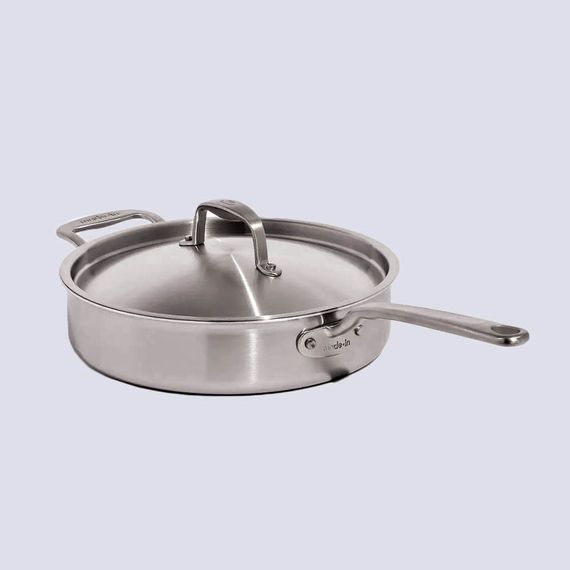

On a Thursday morning, eight cashmere sweaters cover a conference-room table at the Fashion Institute of Technology, where Imran Islam, associate professor of textile development and marketing, prepares to weigh them. I brought three Quince versions as well as similar styles from J.Crew, Aritzia, Naadam, Jenni Kayne, and a Bloomingdale’s brand called Aqua. First, Islam explains that cashmere is made from goat fibers, can vary in length and weight, and is especially good at insulating the body to keep it warm. And that a cashmere sweater’s cost can come down to not just fabric quality but also the way that fabric is treated and knitted into the final product.
I bring out Jenni Kayne’s cardigan jacket ($525) and Quince’s uncanny look-alike ($160). Laid out side by side, the Quince version is discernibly softer. But Islam quickly identifies Jenni Kayne’s as having “a more compact structure” that will maintain its shape longer. The scale proves it out: Quince’s version is about 60 grams lighter.
This evaluation is typical of my morning with the professor. Even though the scale showed Quince’s sweaters weighed less than their counterparts, he thought they looked pretty good. Maybe they won’t be the most durable, he said, but time and wear will tell. And the cost of more humane or ethical manufacturing is impossible to tell by touch. His favorite sweater on the table turns out to be the J.Crew one ($158). “You see how dense those rows are?” he said, pointing to the vertical tracks of knitted fibers.
Quince’s quality level is a tricky thing to generalize, given it sells everything from couches to iPhone cases. Specific categories, including the bedsheets and the cashmere sweaters, have passionate fans. Most of the Quince shoppers in my life said they were generally happy with their purchases, especially since they knew more expensive versions existed elsewhere. I was particularly impressed with a friend’s handwoven leather tote bag. It really did look rich. But one sticking point emerged in conversations with dozens of shoppers about the brand, particularly when it comes to the clothing: The fits can be drab. Like the cardigan jacket that I showed Islam. Quince’s version didn’t have Jenni Kayne’s distinctive sleeves, which were longer and more flared at the ends. As a result, Quince’s looked more like a regular cardigan than a jacket. I had a similar thought after trying Quince’s wool wrap trench coat. Maybe the wool was a little thin, but the shape was classic and well executed. And yet I’ve tried on other versions of the same type of coat, not that much more expensive, that feature subtle design choices in the shape of the sleeves or cut of the waist that separate a basic wardrobe staple from something special. A co-worker summed it up for me: “I highly doubt someone would ever stop me on the street and say, ‘Is that from Quince?’”
What Quince may lack in style, however, it often makes up for in fabric content. You don’t have to be a raw-milk evangelist to be concerned about the microplastics in your home and clothing. For shoppers who care less about style and more about avoiding synthetic materials, Quince’s focus on European linen and washable silk is especially compelling — even for shoppers who know that the lower-than-competitor prices should raise red flags.
“The same people who are buying metal water bottles and are rightly very concerned about microplastics are also trying to get rid of their plastic clothing,” said sustainable-fashion journalist Alden Wicker. In 2021, her website EcoCult investigated Quince’s ecofriendly claims and concluded that the retailer was sometimes incorrectly citing different sustainability certifications. She also found the company didn’t share enough information about its manufacturing to back up its “sustainable at our core” pledge. Such a lack of transparency is not unusual for newer brands that have neither the interest nor the resources to track their often opaque and complicated supply chains. But Wicker argued that Quince was engaging in some clever greenwashing. Its implication, for example, that shipping via air versus ocean reduces carbon emissions “is categorically untrue,” she said. Quince mostly sells natural fibers, yes, but there are ways to cut costs in their production, too. “Usually those cost savings come from exploiting farmers,” she added.
Two years after EcoCult published its findings, Quince’s lawyers sent her a cease-and-desist letter, demanding she take the post down. Wicker didn’t make any changes, and that was the last she heard from the company, which has since tweaked and edited its sustainability language across the site. In 2023, for example, it cut the claim that its cashmere was “non-harmful” to animals after PETA sent the company a cease-and-desist arguing that cashmere production is inherently harmful to goats. Today, Quince’s website promises the company will “never cut corners when it comes to quality, sustainability or fair manufacturing practices.”
Meanwhile, the mainstream awareness of the virtues of buying natural fibers has only grown. And if the price feels right to a shopper, what else can they go off? “A lot of people don’t care. I don’t even blame them. And it is impossible to be such an expert on all these things to make the ‘right decision’ when you’re shopping,” said Wicker. Competitors like Everlane and Reformation are putting more resources into being transparent and accountable about their production, she said, but “they’re getting their lunch eaten by Quince.”
I was reminded of a conversation I had with the former executive of one of the brands Quince duped. She had hoped her customers would resist the temptation of buying such shameless knockoffs, but when her sales took a hit, she realized she was wrong. “They were not above it,” she said. These days, who is?
More From the 2025 Spring Fashion Issue
- Would You Rather Buy an Artemis LED Mask and Neck Plate or Seven Hermès Plates?
- Which Celebrity Book Club Could (Actually) Change Your Life?
- Jessica Simpson and Ashlee Simpson Talk New Music, Heartbreak, and Prince


